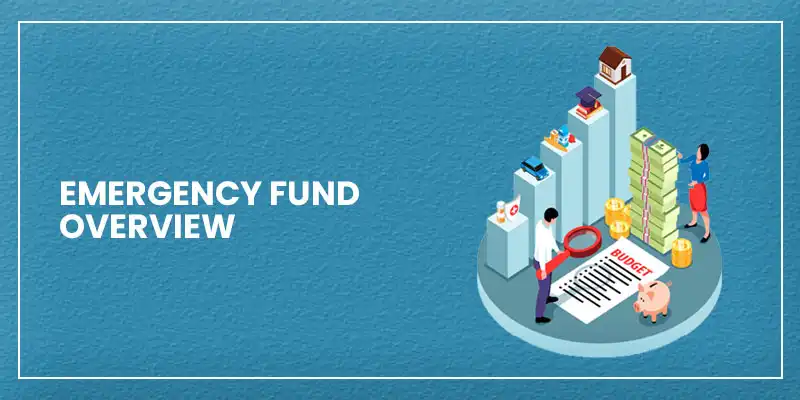An emergency fund refers to liquid savings that can be accessed during unplanned financial events. This article outlines its core principles and structure for informational purposes. An emergency fund comprises easily accessible savings reserved solely for unexpected expenses. It is a buffer for sudden challenges such as medical expenses, temporary income interruptions, or urgent repair costs.
Establishing this safety net preserves financial stability without reliance on costly debt instruments. The primary objective is to safeguard liquidity by providing funds to withdraw quickly when needed. This article details the concept of an emergency fund, outlines its core components, and explains the steps involved in its creation.
Contents
- Definition and Purpose
- Key Elements of an Emergency Fund
- Steps to Build an Emergency Fund
- Assess Your Monthly Expenses
- Determine Your Target Amount
- Choose a Dedicated Savings Account
- Set a Realistic Timeline
- Automate Contributions
- Monitor and Adjust
- Conclusion
- FAQs
Definition and Purpose
An emergency fund is a specific reserve of liquid assets set aside to meet urgent financial needs. It is intended for short-term emergencies rather than planned expenditures or discretionary spending. The fund covers unforeseen situations requiring high-cost loans or credit facilities. Its size typically depends on an individual’s monthly expenses, financial commitments, and personal circumstances.
One can maintain immediate cash flow during challenging times by earmarking a portion of income for such reserves. Reserving funds for emergency use may help individuals meet short-term financial needs without altering long-term financial strategies. It provides stability while minimizing reliance on additional debt. The emphasis remains on preserving accessible, low-risk funds to support urgent needs without altering broader financial strategies.
Read Also: Understanding Common Mistakes in Futures and Options Trading
Key Elements of an Emergency Fund
An effective emergency fund is built on several key principles. First, the fund should consist of liquid assets, allowing for prompt access without penalties or waiting periods. Safety is prioritized over high returns because the main objective is to secure necessary resources for immediate requirements. The funds must be kept in a separate account to prevent their inadvertent use for everyday expenses or long-term investments.
Consistent monitoring of the fund’s adequacy is advised, as changing personal expenses or life circumstances may necessitate adjustments to the target amount. While diversification is essential in other aspects of financial planning, the emergency fund’s primary purpose is liquidity. The fund’s primary feature is accessibility. Its role, when used in financial planning, is to support liquidity considerations without speculative objectives.
Note: This content is for informational purposes only and does not recommend financial behavior.
Steps to Build an Emergency Fund
Below are the step-by-step guidelines for building an emergency fund:
Assess Your Monthly Expenses:
List all regular expenses to determine your essential monthly outgoings. This estimate forms the basis for calculating the required emergency amount.
Determine Your Target Amount:
Individuals often consider setting aside reserves equivalent to a few months of essential expenses, although needs vary. This target provides a buffer to address unforeseen events while maintaining liquidity.
Choose a Dedicated Savings Account:
Open a separate savings account specifically for emergency funds. Keeping these funds separate from everyday accounts helps prevent accidental spending.
Set a Realistic Timeline:
Develop a schedule to reach your target fund within a manageable time frame. Align contributions with your income to build the fund gradually without affecting routine financial obligations.
Automate Contributions:
Set up regular, automatic transfers from your primary account to the emergency fund account. Automatic transfers can support consistent contributions based on personal budgeting choices.
Monitor and Adjust:
Periodically review the balance and adjust the contribution plan as necessary. Update your target if monthly expenses change due to shifts in lifestyle, income, or unforeseen events.
Note: These steps are indicative and may not apply uniformly. Individual discretion and planning preferences vary.
Read Also: Pros And Cons Of Trading Futures And Options In Volatile Markets
Conclusion
An emergency fund is a fundamental element of financial preparedness designed to support immediate cash flow during unforeseen events. It provides a dedicated reserve of readily accessible assets. Individuals can maintain financial stability and continuity by following a systematic approach to building and maintaining this reserve. An emergency fund represents a liquid asset reserve that may be drawn upon in unexpected situations. This article has outlined the informational framework for understanding such funds.
Disclaimer: Investment in the securities market is subject to market risks. Please read all scheme-related documents carefully before investing. The information provided in this article is for educational and informational purposes only and is not intended as investment advice. Trading in derivatives, including options, involves substantial risk and is not suitable for all investors. Past performance is not indicative of future results. Readers are advised to consult with their financial advisors before making any trading decisions.
FAQs
Emergency funds are typically held in accounts that offer liquidity and easy access. Choices may include low-risk savings accounts or equivalent instruments.
Periodic reviews may align with changes in personal circumstances. Some individuals revisit their financial reserves annually or semi-annually.
The amount varies depending on individual income and expenditure patterns. No universal standard exists, and requirements differ across households.

